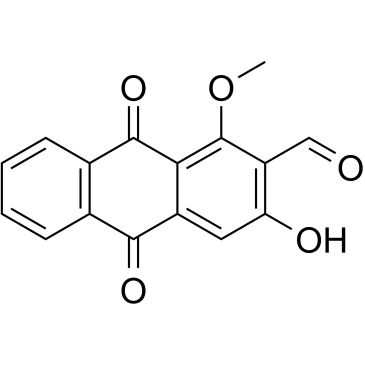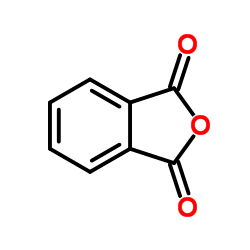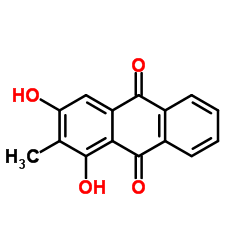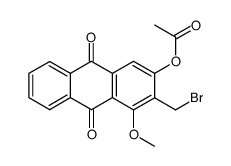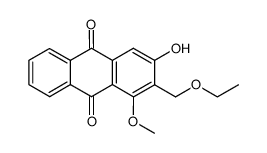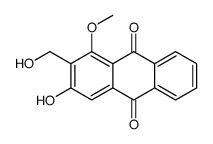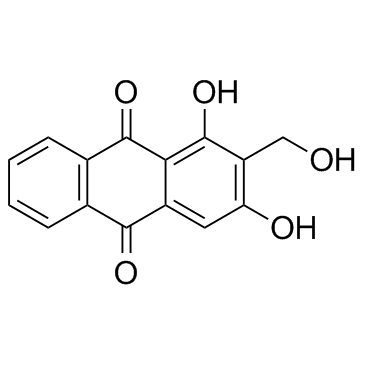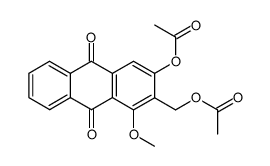477-84-9
| Name | Damnacanthal |
|---|---|
| Synonyms |
3-hydroxy-1-methoxy-9,10-dioxoanthracene-2-carbaldehyde
2-Anthracenecarboxaldehyde, 9,10-dihydro-3-hydroxy-1-methoxy-9,10-dioxo- 3-Hydroxy-1-methoxy-9,10-dioxo-9,10-dihydro-2-anthracenecarbaldehyde Damnacanthal 3-Hydroxy-1-methoxy-9,10-dioxo-9,10-dihydro-anthracene-2-carbaldehyde 3-Hydroxy-1-methoxy-9,10-dioxo-9,10-dihydroanthracene-2-carbaldehyde |
| Description | Damnacanthal is an anthraquinone isolated from the root of Morinda citrifolia. Damnacanthal is a highly potent, selective inhibitor of p56lck tyrosine kinase activity. Natural Damnacanthal inhibits p56 lck autophosphorylation and phosphorylation of exogenous substrates with IC50s of 46 nM and 220 nM, respectively. Damnacanthal is a potent inducer of apoptosis with anticancer activity. Damnacanthal also has antinociceptive, anti-inflammatory effects in mice and anti-fungal activity against Candida albicans[1][2][3][4]. |
|---|---|
| Related Catalog | |
| Target |
IC50: 46 nM (p56 lck autophosphorylation) and 220 nM (phosphorylation of exogenous substrates by p56 lck)[1]; Apoptosis[2]; Candida albicans[2] |
| In Vitro | Damnacanthal has > 100-fold selectivity for p56lck over the serine/threonine kinases, protein kinase A and protein kinase C, and > 40-fold selectivity for p56lck over four receptor tyrosine kinases. Damnacanthal also demonstrates modest (7-20-fold), but highly statistically significant, selectivity for p56lck over the homologous enzymes p60src and p59fyn[1]. Damnacanthal (0.1-100 μM; 1-4 days; HCT-116 and SW480 cells) treatment results in a significant reduction of cell proliferation in a concentration- and time-dependent manner[2]. Damnacanthal (1-50 μM; 72 hours; HCT-116 cells) treatment results in a significant enrichment in the number of cells in the S/G1 and G2/G1 phases at concentration of 50 μM[2]. Damnacanthal (10 μM; 24 hours; HCT-116 cells) treatment significantly increases caspase 3/7 activity. Damnacanthal-induced apoptosis[2]. Damnacanthal (0.1-10 μM; 24 hours; HCT-116 cells) treatment induces NAG-1 expression in HCT-116 cells. Cyclin D1 expression is reduced at 10 μM of Damnacanthal, whereas p21 and p53 does not alter their expression. PARP cleavage is seen at 10 μM Damnacanthal treatment only in HCT-116 cells, where NAG-1 is induced[2]. Damnacanthal treatment for 2 weeks shows significant decreasing colony number in HCT-116 cells in a concentration-dependent manner. Damnacanthal-treated cells show a dramatic inhibition of clonogenic capacity. Damnacanthal-treated (1-50 μM; 48 hours) cells significantly inhibits the migration of HCT-116 cells in a concentration-dependent manner[2]. Cell Proliferation Assay[2] Cell Line: HCT-116 and SW480 cells Concentration: 0.1 μM, 1 μM, 10 μM, 100 μM Incubation Time: 1, 2, and 4 days Result: Resulted in a significant reduction of cell proliferation in a concentration- and time-dependent manner. Cell Cycle Analysis[2] Cell Line: HCT-116 cells Concentration: 1 μM, 10 μM and 50 μM Incubation Time: 72 hours Result: Resulted in a significant enrichment in the number of cells in the S/G1 and G2/G1 phases at concentration of 50 μM. Apoptosis Analysis[2] Cell Line: HCT-116 cells Concentration: 10 μM Incubation Time: 24 hours Result: Significantly increased caspase 3/7 activity. Western Blot Analysis[2] Cell Line: HCT-116 cells Concentration: 0.1 μM, 1 μM and 10 μM Incubation Time: 24 hours Result: NAG-1 was induced in HCT-116 cells in a dose- and time-dependent manner. Cyclin D1 expression was reduced at 10 μM. |
| In Vivo | Damnacanthal (10-100 mg/kg; oral administration; for 10-300 minutes; male ddY mice) treatment exhibits a significant antinociceptive effect in a dose-dependent manner in the formalin test. Administration of damnacanthal (100 mg/kg) shows significant inhibition of histamine-induced paw edema[4]. Animal Model: Male ddY mice (5-6 weeks) injected with formalin or Histamine[4] Dosage: 10 mg/kg, 30 mg/kg and 100 mg/kg Administration: Oral administration; for 10 minutes, 30 minutes, 60 minutes or 300 minutes Result: Significantly reduced the growth of human lung tumor without acute toxicity. |
| References |
| Density | 1.5±0.1 g/cm3 |
|---|---|
| Boiling Point | 531.9±50.0 °C at 760 mmHg |
| Molecular Formula | C16H10O5 |
| Molecular Weight | 282.248 |
| Flash Point | 204.9±23.6 °C |
| Exact Mass | 282.052826 |
| PSA | 80.67000 |
| LogP | 3.74 |
| Vapour Pressure | 0.0±1.5 mmHg at 25°C |
| Index of Refraction | 1.692 |
| Storage condition | 2-8℃ |
| Hazard Codes | Xi |
|---|
| Precursor 9 | |
|---|---|
| DownStream 3 | |

